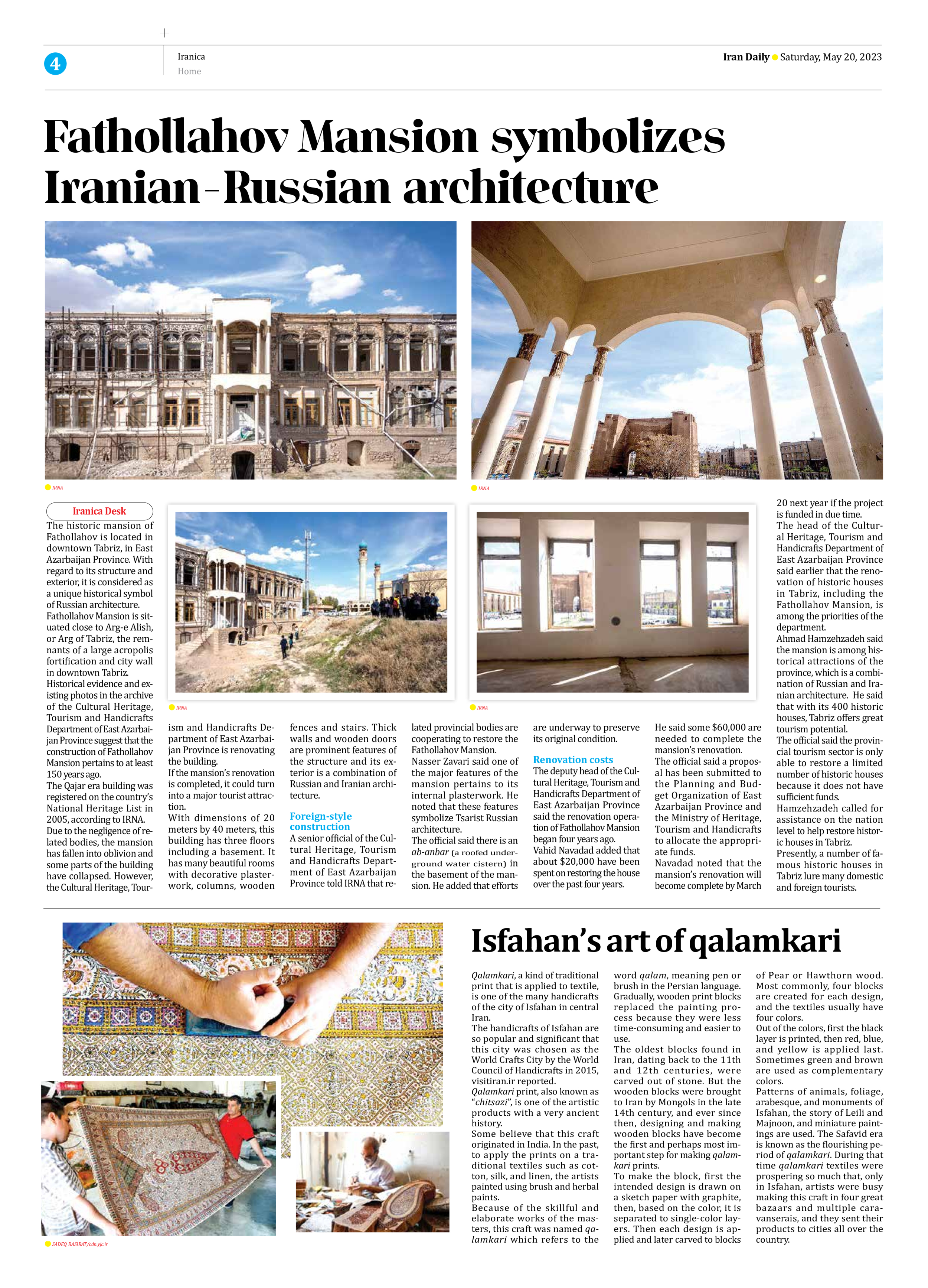
Isfahan’s art of qalamkari
Qalamkari, a kind of traditional print that is applied to textile, is one of the many handicrafts of the city of Isfahan in central Iran.
The handicrafts of Isfahan are so popular and significant that this city was chosen as the World Crafts City by the World Council of Handicrafts in 2015, visitiran.ir reported.
Qalamkari print, also known as “chitsazi”, is one of the artistic products with a very ancient history.
Some believe that this craft originated in India. In the past, to apply the prints on a traditional textiles such as cotton, silk, and linen, the artists painted using brush and herbal paints.
Because of the skillful and elaborate works of the masters, this craft was named qalamkari which refers to the word qalam, meaning pen or brush in the Persian language. Gradually, wooden print blocks replaced the painting process because they were less time-consuming and easier to use.
The oldest blocks found in Iran, dating back to the 11th and 12th centuries, were carved out of stone. But the wooden blocks were brought to Iran by Mongols in the late 14th century, and ever since then, designing and making wooden blocks have become the first and perhaps most important step for making qalamkari prints.
To make the block, first the intended design is drawn on a sketch paper with graphite, then, based on the color, it is separated to single-color layers. Then each design is applied and later carved to blocks of Pear or Hawthorn wood. Most commonly, four blocks are created for each design, and the textiles usually have four colors.
Out of the colors, first the black layer is printed, then red, blue, and yellow is applied last. Sometimes green and brown are used as complementary colors.
Patterns of animals, foliage, arabesque, and monuments of Isfahan, the story of Leili and Majnoon, and miniature paintings are used. The Safavid era is known as the flourishing period of qalamkari. During that time qalamkari textiles were prospering so much that, only in Isfahan, artists were busy making this craft in four great bazaars and multiple caravanserais, and they sent their products to cities all over the country.







